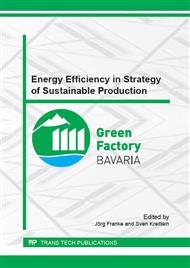p.139
p.147
p.154
p.162
p.171
p.180
p.187
p.196
p.205
Influence of Surface Structured Filler Wires on Laser Beam Welding of Copper Alloys
Abstract:
Compared to steel, the required amount of energy for conventional welding of copper is higher, due to its higher thermal conductivity. This problem is mainly solved by preheating the work pieces or welding processes with high intensities such as laser beam welding. As the absorption of copper for infrared wavelengths, which are commonly used in industrial applications today, is typically low, the energy efficiency of the laser welding process is low. Besides this, if filler wires are used in order to increase the bridgeable width of joining gaps, the energy consumption of the process is further increased due to the additional amount of energy required to melt the filler material.As roughened surfaces of copper parts are known to increase absorption and consequently energy efficiency of laser beam welding without filler wires, this paper investigates the influence of surface structured filler wires on laser beam welding of copper alloys. Thus, the correlation between knurling geometries, absorption, molten volume and the welding result is investigated. For this reason, the welding result is evaluated by means of geometrical, electrical and mechanical weld seam properties e.g. seam width, weld reinforcement, area of cross-section, electrical resistance, tensile strength and strain.
Info:
Periodical:
Pages:
171-179
Citation:
Online since:
November 2015
Price:
Сopyright:
© 2015 Trans Tech Publications Ltd. All Rights Reserved
Share:
Citation:


